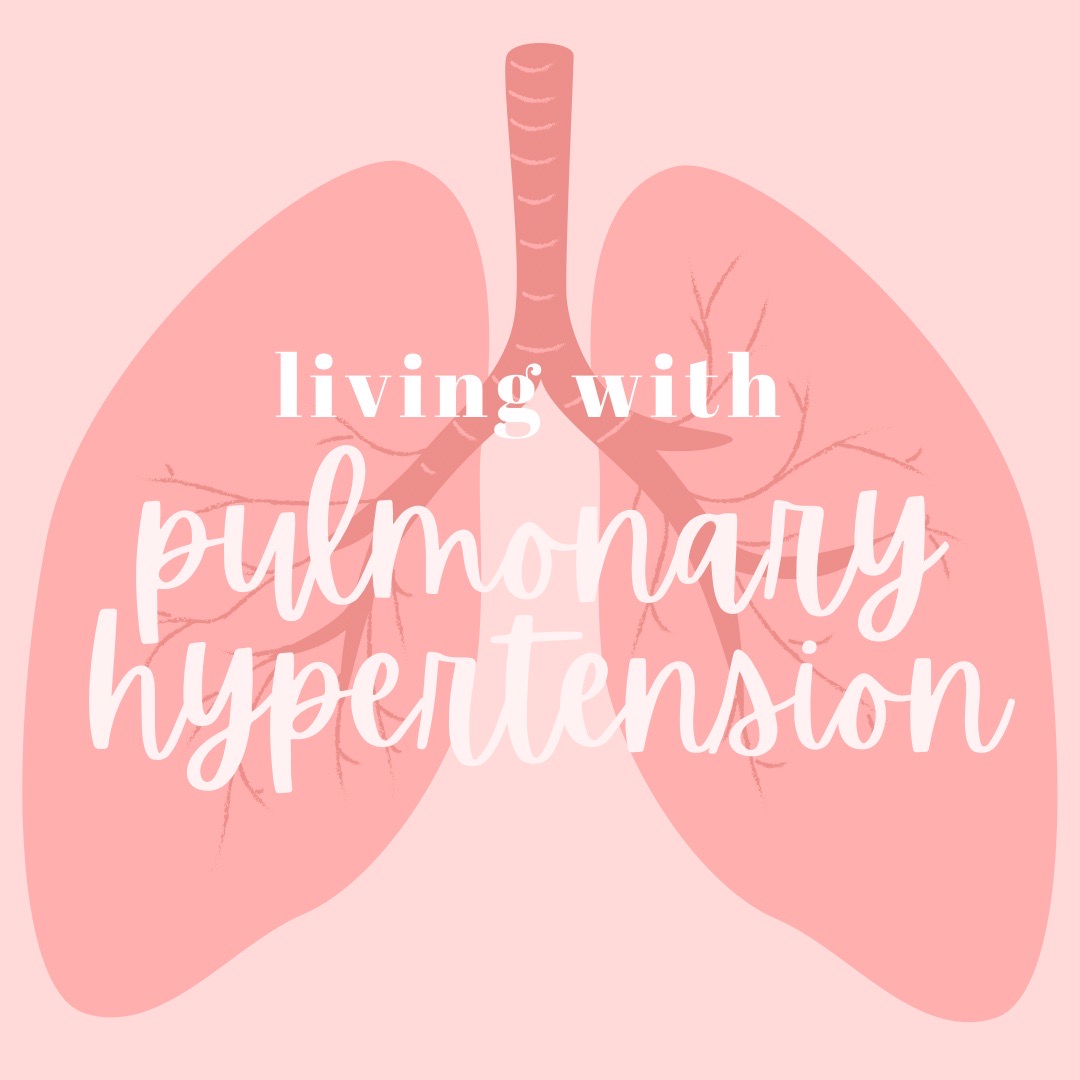It’s been a wild and crazy year to say the least. I was diagnosed with not one, but TWO rare diseases within one week – Pulmonary Hypertension and FSGS. It brought relief to finally have answers, but I was also dropped into a new rabbit hole.

I knew nothing about FSGS or CTEPH. Never even heard of either of them before diagnosis. It didn’t even cross a radar or spark a “maybe its this” conversation. Frustratingly enough, everything is all interwoven in some tangled web mess that my body has created. My path and treatment plan started out promising. I felt confident in my medical team, like I was getting the most practical and effective treatments.
I wanted to take some time to share the journey that I have been on, medically speaking, and where I am today.
Pulmonary Hypertension Classification
Pulmonary hypertension is separated into groups based on the cause of the hypertension. Originally, I was put into Group 4 which is CTEPH. Pulmonary hypertension caused by blood clots in the lungs. I had 3 recorded PEs, and it was clear that I had pulmonary hypertension following my last PE. However, after further investigation by experts in the field, it seemed like I fit into Group 1, which is Pulmonary Arterial Hypertension. This could be hereditary, idiopathic, or related to a connective tissue disease – in my case, Sjogren’s Syndrome.

Along with grouping the types of pulmonary hypertension, there is a risk stratification as well which reflects the severity of the hypertension. It is based off of a series of objective and subjective testing. When I was first diagnosed, I was in the high risk, severe category. Now, I am considered intermediate risk, just one point shy of low risk.

The exact definition and cause of my pulmonary hypertension is not clearly understood. However, the treatment I am currently on is helping. To me, that is all that matters.
Pulmonary Hypertension Treatment
Pulmonary hypertension medications are hard to come by. It is always a process to get a prescription approved, paid for, and filled. These medications are highly regulated, and can only be filled at specific specialty pharmacies in the nation. This means I have to call and order these medications to be delivered to my house monthly.
Adempas
Adempas was my first pulmonary hypertension medication, as it is commonly used to treat patients in Group 1 and 4 with pulmonary hypertension – aka ME! Its purpose is to keep blood vessels open, so more blood can flow through the lungs.
When I first started this medication, I had to stay on the phone with a nurse for 2 hours and check my blood pressure every 15 minutes! A lot of these medications cause your blood pressure to drop, so they had to make sure mine stayed in a safe zone.

The main side effects I had from this medication was SEVERE headaches and indigestion. I’ve been on Adempas for about 10 months now, so I don’t feel the side effects as much anymore. The most annoying part of taking this medication is that it requires me taking a pregnancy test at the lab every single month. I am constantly reminded that I can’t have children with this disease. This medication also has teratogenic effects on a developing baby. Every time I fill the prescription, I have to speak to a pharmacist and confirm my negative pregnancy test. Like okay, we get it, no baby is growing in this body ever again. It’s really just more of a hassle now than anything.
Remodulin

The next and most obvious medication you’ve heard me talk about already is Remodulin. Fortunately (I guess?), I am able to take the generic form – Treprostinil. Remodulin is administered through a continuous infusion through a subcutaneous pump. It can also be given through an IV via central line. This medication also works like Adempas, in that it widens the blood vessels to allow blood to flow through more easily. Once I started on Remodulin, I was feeling much better. I didn’t feel like my heart was beating out of my chest when I was just sitting doing nothing. I didn’t feel myself running out of breath talking on the phone.
The side effects for this medication are wild. It is really like roulette, every day can feel different. My biggest side effects I feel mostly are fatigue, nausea, and lack of appetite. Not to mention, the miserable site pain felt during “hell week.” There is no maximum dose for this medication either. I just keep increasing the rate on my pump until the negative side effects begin to outweigh the positive ones. I have something called a dosing sheet which is a chart directing me how much medicine to put in my syringe and at which rate to set my pump with each increase.

One other adverse effect of Remodulin is that it is ONE OF THE MOST EXPENSIVE medications in the country! Fortunately, there are many assistance programs, such as The Assistance Fund, that help cover the costs of these medications for patients like myself. The chart below depicts the the cost of the medication only! It doesn’t include the $800+ of supplies required each month to administer the medication.
Lagniappe Meds
I will call my next few lagniappe meds, because they indirectly treat my pulmonary hypertension. I take 2 diuretics – Lasix and Aldactone. From my days with Renee, I learned that Aldactone is not much of a diuretic, but helps keep me from losing too much potassium during the diuresis process. These meds help keep excess fluid off when my heart can’t efficiently pump it all. At my lowest point, I was in fluid overload and my heart just couldn’t keep up.
The next lagniappe med is actually VERY VITAL. It is my blood thinner – Eliquis. I will be on this med for life and can never miss a dose. I have been on some type of blood thinner for 2 years now, and it isn’t the worst thing compared to some of my other meds. However, I do have random bruises show up every now and then. Also, let’s just say I hate this medication one particular week out of each month.
Pulmonary Rehab
This is one treatment I specifically asked for. I am a physical therapist, so my brain always goes to rehab. Physically, I knew I was deconditioned because of the excessively sedentary and emotional year I had. I also knew my cardiopulmonary conditioning was in the toilet, because I couldn’t do anything without my heart rate skyrocketing.
It started out a little rough, but I must say rehab has SIGNIFICANTLY helped me! I am thankful I am able to use and move my body enough to participate in rehab. Basically I perform cardio equipment for an hour while someone monitors my EKG, oxygen saturation, and blood pressure the whole time.
It is exhausting, I’m not going to lie. Some days, I need a nap after. However, some days I have so much energy and feel like my “old self” again. I still have areas of weakness, but I am gaining more confidence and letting myself take risks again.
In fact, I tried to go play tennis with Chance a couple of weeks ago. This was something we did A LOT before I got sick. I don’t mean Serena tennis, I just went to volley a few balls over the net. Well, I got a little too excited and ran after a ball. My legs gave out on me, I rolled my ankle, and fell to the ground landing on my butt with my hand out to catch my fall. I sat for a few seconds, realized what happened and then the pain hit. I guess I was just so overcome with shock and pain, I actually passed out and peed my pants (sorry mom). Chance said I was out for about 3 seconds, and then I woke up calm as a cucumber. I took a chance, and failed, but still here to tell the story!
But Does It Work?
I’m still learning my body and my symptoms, but I’d like to say everything is working. Fingers crossed…When I was first diagnosed, my resting heart rate would be in the 120s. Resting, as it not doing anything. My heart always felt like it was beating out of my chest, and chest pain was a daily occurrence. Today, my resting heart rate is in the mid 80s – 90s.

At my first 6 minute walk test, I could only walk 397 meters and my oxygen went from 98% to 87%. Today, I am able to walk 463 meters with an appropriate decrease in saturation (2%).
I have officially removed any and all supplemental oxygen from my home (with permission from my doctor). I don’t need it, and have let it go as my crutch and safety net.

My most recent echo continues to show elevated pressures, and a dilated right heart among other findings consistent with pulmonary hypertension. However, it will take months before changes will begin to show on the echo.
In April, my BNP blood test was 1700 when I was in San Diego getting tested for PTE surgery. This is the test that measures the stress and strain on the heart. Normal is <100, and my recommended goal is <50. In June my BNP was 252 which was the lowest it has ever been since 2019.
The symptoms, the medications, the side effects, the constant phone calls can be very overwhelming at times. However, I am determined to put this beast back in its cage. As you remember, I hate being told I can’t do something.
Keep Moving Forward
There were times I feared for my life during this past year. I was so lost and confused, I second guessed every symptom I had. Is this a side effect? Do I need to go to the hospital? Will I be able to walk that far?
One year out, I am nowhere near where I want to be, but I am sure am MUCH CLOSER than I ever thought I could be.
If you have pulmonary hypertension and are newly diagnosed, keep moving forward and keep asking questions. If you are a seasoned patient, please share your advice. It has really kept me moving forward. If you are here for support, I hope this was informative and educational. Thanks for spending your time with me. Hopefully next year, I’ll have an even better report!





Be the first to reply